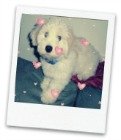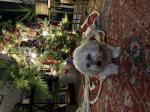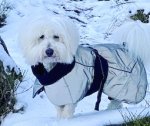Exercise for Older Dogs:
Benefits and Gentle Routines to Keep Them Healthy
As your Coton de Tulear becomes a senior, you may notice changes in their energy levels and mobility. It’s important to recognize that exercise remains a crucial aspect of maintaining a high quality of life for your older dog.
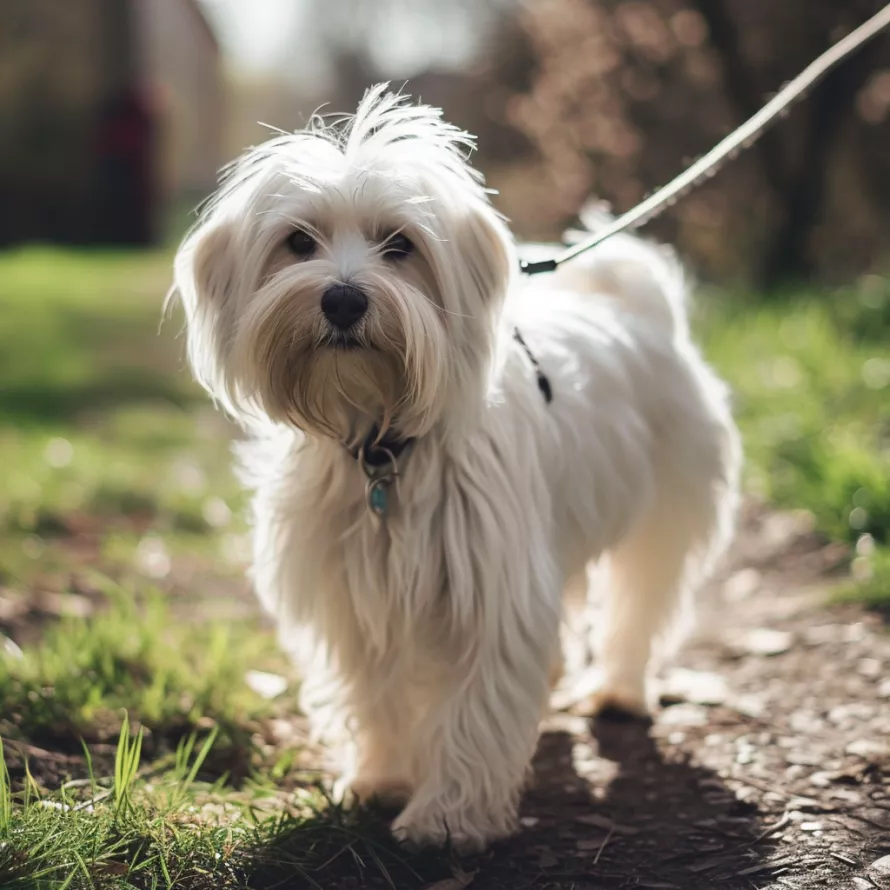
Benefits of regular exercise for older dogs include:
- Lowers blood pressure
- Improves cardiovascular function
- Lowers pulse rate
- Regulates their weight, which is especially important in preventing disease in older dogs
- Aids proper digestion
- Improves joint flexibility
- Cleanses the body of toxins
- Promotes overall well-being
However, your older dog's exercise routine should be tailored to their specific needs and abilities. As dogs age, their endurance and physical capabilities decline, making it essential to adapt their activity levels to prevent injury and undue strain.
Paying close attention to your dog's comfort and adjusting the intensity and duration of exercise can help manage age-related conditions and encourage a sense of well-being.
When my Coton, Luc, got older, he struggled with mobility due to a disc issue in his back. It would have been easy to let him lie on the couch all day and rest, but I knew mental and physical stimulation would not only prolong his life but give him a better quality of life as well.
So, we’d do gentle exercises like slow walks or playing puzzle games, or I’d have him go on scavenger hunts in the house using his nose to find little treats and toys.
Understanding Senior Dogs' Physical Needs
When caring for senior dogs, it's essential to consider their changing physical needs, from adjusting exercise routines to managing weight for optimum health.
Assessing Health and Mobility
Before modifying your senior dog's exercise program, evaluate their health and mobility. Note any signs of pain, such as reluctance to move, stiffness after resting, or difficulty with stairs. Recognize that conditions like hip dysplasia, joint issues, or heart disease may affect their capability for physical activity.

But there’s great news for our senior Coton companions! Like my dog Lucy, who's bouncing back from a back injury thanks to a fantastic rehab center, many older dogs are getting a new lease on life. This is her practicing at home.
I see them every week splashing around in hydrotherapy pools, chilling out with acupuncture sessions, getting their spines aligned with chiropractic care, and gaining benefits from laser therapy.
And that's not all – a whole world of treatments is available, from tried-and-true medications to natural remedies like supplements and herbs. Seeing these beautiful dogs enjoying their golden years with less pain and more pep in their step is incredible.
Determining the Right Amount of Exercise
Finding the balance for how much exercise a senior dog needs is key. While daily exercise is important, their tolerance is likely lower now. Tailor the exercise program to their physical limitations, ensuring they get enough exercise without overexertion. This may mean shorter, more frequent walks instead of long hikes.
Physical Activity:
- Mild walks: 10-15 minutes, twice a day.
- Low-impact activities: Swimming or gentle play.
Weight Management for Aging Dogs
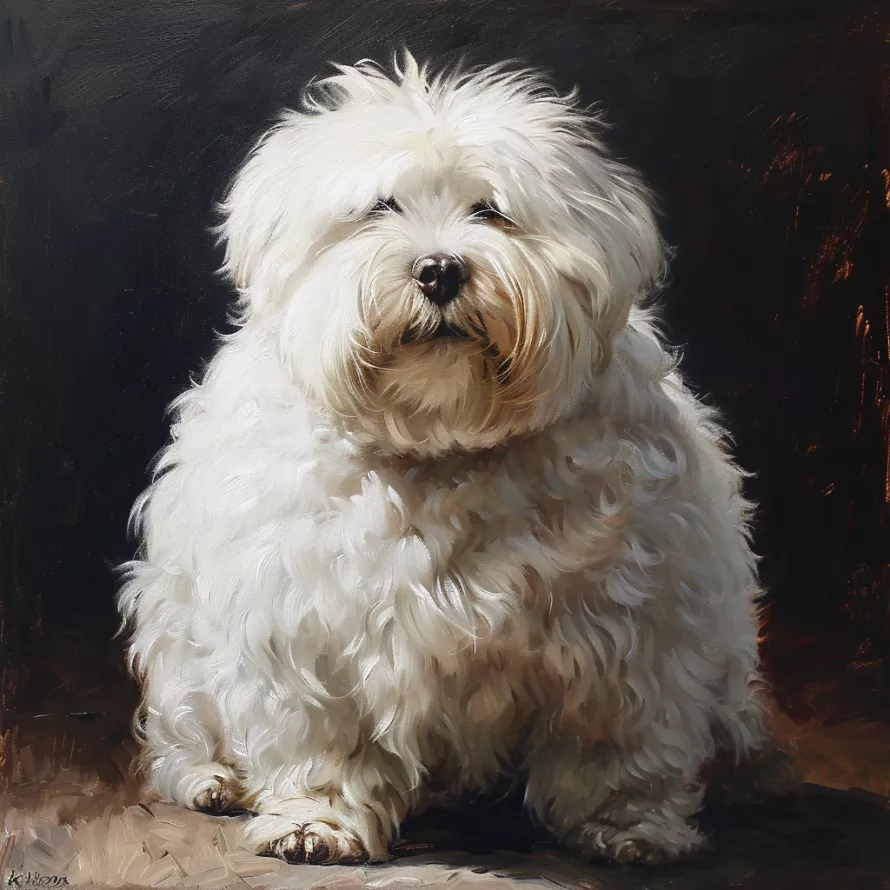
Keeping your elderly dog at a healthy weight is crucial to managing their physical limitations in old age. Weight gain can exacerbate health problems, so monitor your dog's weight regularly and adjust their diet as needed, alongside a suitable exercise regime.
Unfortunately, many healthy foods have a lot of calories. So, you may need to work with your vet or a pet nutritionist if you need help changing your dog’s diet.
Types of Exercises for Older Dogs
Low-Impact Activities
Daily Walks: A daily walk is a low-impact activity that allows your senior dog to exercise without placing undue stress on their joints. Tailor the walk's length and pace to match your dog's comfort level. Let him stop and do all the sniffing he wants since nose work is also an enrichment activity that can promote good health.
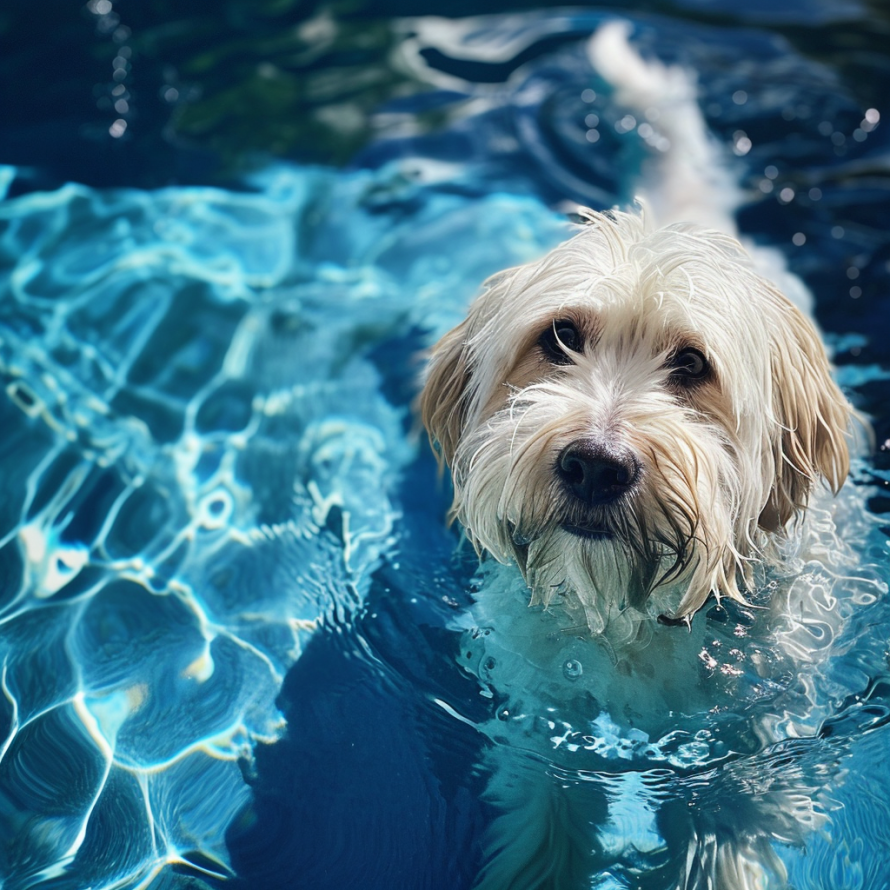
Swimming: Swimming offers excellent low-impact exercise, contributing to muscle strength while minimizing joint strain. It's especially beneficial for dogs with arthritis or other joint issues. Make sure the water is safe and accessible for your senior pet.
Mental Stimulation Exercises
Scent Games: Encourage your dog to follow their nose; scent games provide great mental stimulation. Hide treats around the house or yard for a fun, engaging search that sharpens their mind.
Puzzle Toys and Snuffle Mats: Puzzle toys and snuffle mats are interactive tools that challenge your dog’s problem-solving skills, which is a great way to keep their brain active. They encourage focus and can slow down eating and aid digestion.
You can find more enrichment activities for your dog here,
Strength and Flexibility Training
Range of Motion Exercises: Doing physical therapy exercises can help maintain your dog’s range of motion and mobility. Gentle stretching under the guidance of a professional can prevent stiffness in problem areas.
Obstacle Courses: Set up a simple obstacle course with cones or soft barriers to navigate. This can help your active dog maintain muscle tone and balance and enhance strength and flexibility. Always ensure the obstacles are appropriate for your dog's abilities and health.
Creating a Safe Exercise Environment
When designing an exercise regime for older dogs, creating a safe environment that considers their comfort and joint health is crucial. This involves choosing ideal exercise spaces, appropriate accessories and tools, and closely observing your dog for any signs of discomfort.
Ideal Exercise Spaces
For your older dog, flat surfaces are preferable for both indoor exercises and outdoor activities to prevent strain on their joints. Indoors, arrange a clutter-free area where they can move around without the risk of tripping or slipping.
Outdoors, choose grassy or padded areas that provide cushioning for their legs and paws.
Use of Accessories and Tools
- Puzzle Toys: Engage your dog's mind with puzzle toys that encourage gentle movement and problem-solving.
- Soft Toys: Use soft toys for low-impact play, reducing stress on teeth and gums.
- Snuffle Mat: Incorporate a snuffle mat during feeding time to stimulate your dog’s senses and encourage a subtle form of mental and physical exercise.
| Accessory/Tool | Purpose | Benefit |
|---|---|---|
| Puzzle Toys | Mental Stimulation | Reduce boredom, gentle on joints |
| Soft Toys | Low-Impact Play | Safe for teeth, encourages light activity |
| Snuffle Mat | Sensory Stimulation | Encourages sniffing and light movement |
Monitoring for Signs of Discomfort
It is important to watch for any signs of discomfort during and after exercise. These signs may include limping, reluctance to move, or reduced activity levels.
If you notice any of these behaviors, you should pause the activity and consider consulting your veterinarian. Regular observation helps maintain your dog's joint health and overall well-being.
Adapting to Your Dog’s Aging Process
As your dog ages, their energy levels and capabilities can change. Being mindful of these changes ensures you provide a balanced routine that caters to their evolving needs.
Maintaining Routine and Adaptability
Routine is key for an older dog, but adaptability is equally important. Tailor the daily walk to match your dog's pace. If regular walks were once long and brisk, consider transitioning to short walks that allow rest as needed.
Establishing a regular exercise pattern is crucial for maintaining your senior dog's health. Aim for a consistent schedule with daily exercise sessions.
These can include walks, light play, or swimming, always paced to match your dog's abilities and stamina. Your goal here isn't strenuous activity but promoting mobility and engagement.
Introducing New Activities Gradually
Introducing new activities requires a gradual approach to avoid overwhelming or injuring your dog. Start with gentle, low-impact exercises that are easy on the joints.
- Light fetching with soft toys
- Gentle tug-of-war with a soft rope
- Leisurely strolls in a new environment
Teaching an Old Dog New Tricks
Mental exercise is as crucial as physical activity for an aging dog. Teaching new tricks keeps their mind sharp and introduces fun activities that are less physically demanding.
Ensuring a balance between physical and mental exercise is vital to a dog's overall well-being. While physical exercise maintains a dog’s muscles and joint health, mental exercise keeps their mind sharp and engaged.
- Use simple commands to teach new behaviors progressively.
- Fun activities: Puzzles and treat-finding games engage their senses and mental faculties.
Don’t forget to make it fun! Exercise is a great way to bond with your senior dog.
Return to Senior Dog Care
Return to Home Page


